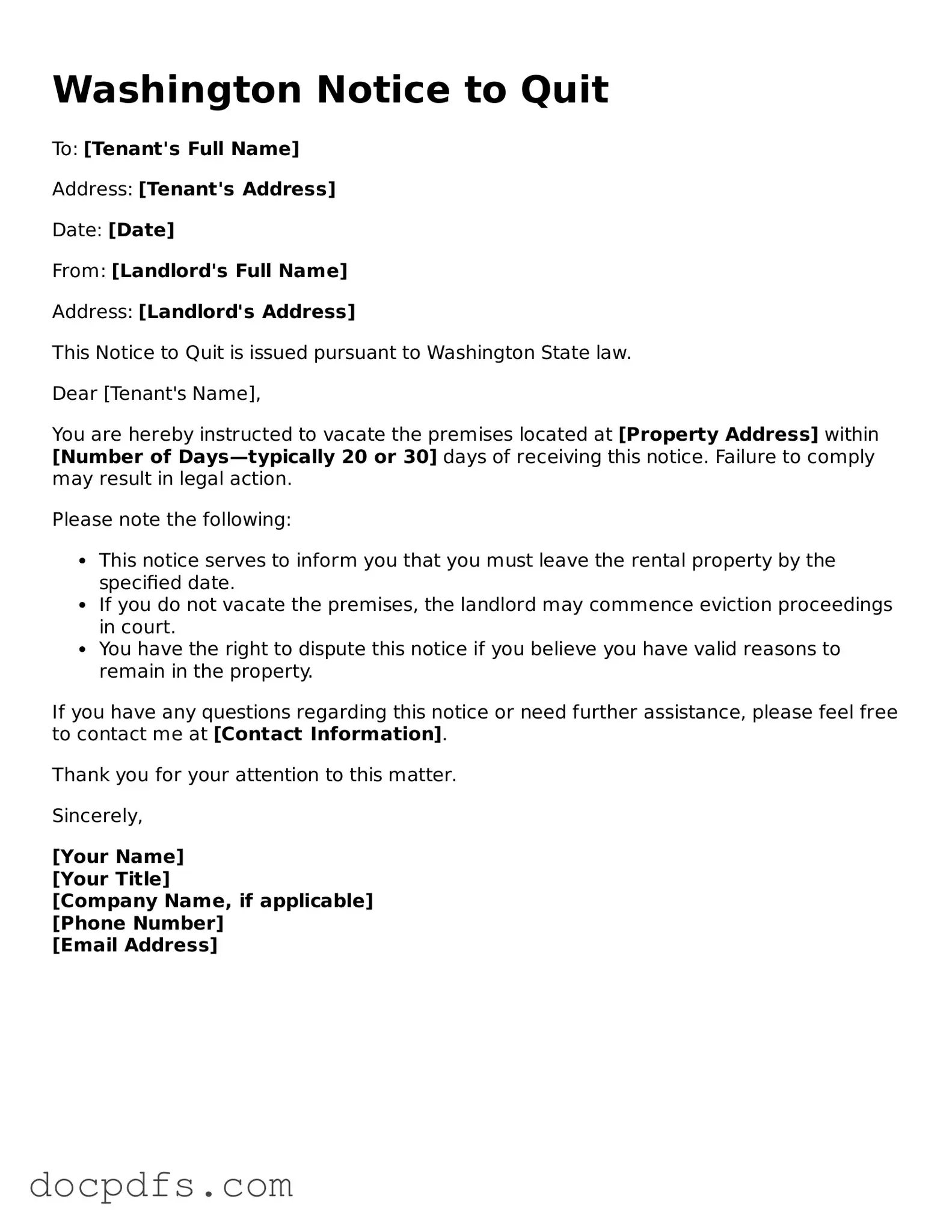The Washington Notice to Quit form is a legal document used by landlords to inform tenants that they must vacate the rental property. This notice typically precedes eviction proceedings and serves as a formal request for the tenant to leave, often due to lease violations or non-payment of rent.
When should a landlord use a Notice to Quit?
A landlord should use a Notice to Quit when a tenant has violated the terms of the lease agreement. Common reasons include:
-
Failure to pay rent
-
Excessive damage to the property
-
Engaging in illegal activities on the premises
-
Violating lease terms, such as having unauthorized pets or occupants
It is important to note that the specific grounds for issuing a Notice to Quit may vary based on local laws and the terms of the lease.
How much notice is required in Washington?
The notice period required in Washington depends on the reason for the eviction. Generally, landlords must provide:
-
14 days for non-payment of rent
-
10 days for lease violations
-
3 days for illegal activities
These timeframes give tenants a chance to remedy the situation before eviction proceedings can begin.
Can a tenant contest a Notice to Quit?
Yes, tenants have the right to contest a Notice to Quit. If they believe the notice was issued unfairly or without cause, they can respond in writing or seek legal advice. In some cases, tenants may choose to file a complaint or counterclaim in court if eviction proceedings are initiated.
What happens if a tenant does not comply with the Notice to Quit?
If a tenant does not comply with the Notice to Quit by the specified deadline, the landlord may proceed with eviction proceedings. This typically involves filing an unlawful detainer action in court, which can lead to a hearing where both parties can present their case.
Is a Notice to Quit the same as an eviction notice?
No, a Notice to Quit is not the same as an eviction notice. The Notice to Quit is a preliminary step that informs the tenant of the need to vacate the property. If the tenant does not leave by the deadline, the landlord can then file for eviction, which is a legal process that may result in a court order for the tenant to leave.
How should a Notice to Quit be delivered to the tenant?
The Notice to Quit should be delivered in a manner that ensures the tenant receives it. Common methods include:
-
Hand delivery to the tenant
-
Mailing the notice to the tenant's address
-
Posting the notice on the rental property
It is advisable for landlords to keep a record of how and when the notice was delivered.
While there is no official state form for a Notice to Quit in Washington, it is important that the notice includes specific information such as the reason for the notice, the date by which the tenant must vacate, and the landlord's contact information. Using a well-structured template can help ensure all necessary details are included.
What should a tenant do upon receiving a Notice to Quit?
Upon receiving a Notice to Quit, a tenant should carefully read the document to understand the reasons for the notice and the deadline for vacating. It is crucial to assess the situation and consider options, which may include:
-
Paying overdue rent or addressing lease violations
-
Seeking legal advice or assistance
-
Preparing for potential eviction proceedings
Taking prompt action can help tenants protect their rights and avoid eviction.
Can a tenant negotiate with the landlord after receiving a Notice to Quit?
Yes, tenants can negotiate with their landlords after receiving a Notice to Quit. Open communication may lead to solutions, such as payment plans or lease modifications. It is advisable for tenants to document any agreements made during these discussions to ensure clarity and accountability.
